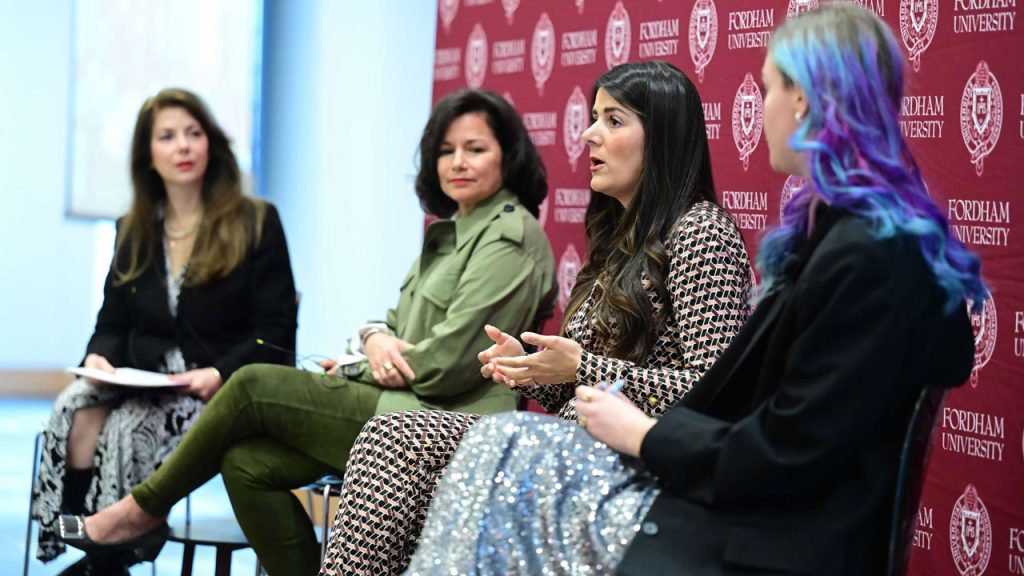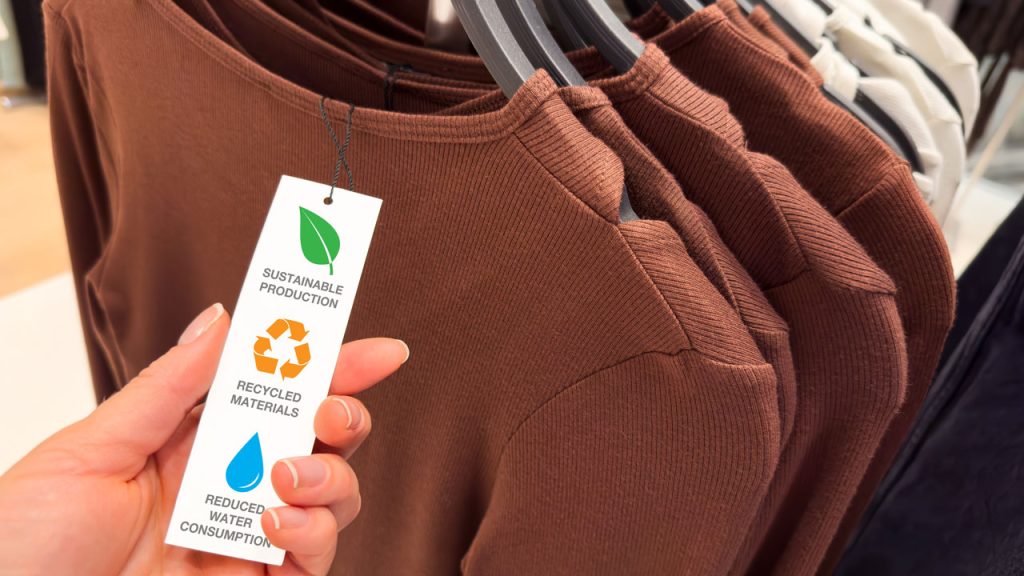While shopping for trendy fast-fashion items might be an easier—and cheaper—purchase in the moment, the long-term effects of this practice are causing damage to the environment as well as those working in the industry, according to Fordham experts.
“People get excited about the $2 T-shirt” and don’t think about the impact on factory workers making the clothing, Susan Scafidi, director of the Fashion Law Institute at Fordham, told Fordham Now.
But industry leaders are looking to help companies and consumers change, in part by incorporating more sustainable practices that are better for workers and the planet.
Three Fordham graduates in the fashion and beauty worlds shared some industry and personal insights at a recent Fordham Women’s Summit.
Corporate and Consumer Responsibility Is a ‘Give and Take’
Georgeanne Siller, GABELLI ’17, an assistant buyer for women’s apparel at Macy’s, said that customers can be “catalysts for positive change” in the fashion and beauty world through their buying habits. However, oftentimes she feels “an undue amount of responsibility falls on consumers when it’s really the companies that need to be driving the change.”
“I think that there’s a lot of company influence on consumers, things like seeing the popularity of TikTok hauls, where fashion influencers will just buy an insane amount of clothing at one time,” she said, adding that influencers can end up buying tons of products each week “looking for dupes or cheaper alternatives.”
“There’s a lot of give and take, I think, with the consumers and the companies, and I think the responsibility definitely tips towards the companies, but consumers can still be a powerful voice for that change,” she said.

Companies Can Do More to Source Sustainably Created, Long-Lasting Materials
Fast fashion usually involves “cheaply produced and priced garments” that are designed and produced quickly, according to Earth.org, an environmental news organization.
Claudia Rondinelli, FCLC ’91, head of global materials, leather, and trims at Ralph Lauren, said the company is working to “take a more proactive approach when we’re talking about material research and materials we’re using—specifically on handbags and footwear—but also in apparel.”
This means sourcing materials that will last longer, leading to less turnover and waste, as well as materials that are made sustainably, such as by using recycled products.
“It is really [about] selecting materials that are truly making a difference, and focus[ing] on the circular life of the material, not just looking at it from a short term, on how it might look like it’s less impactful on the environment, but really looking at end of life,” Rondinelli said.
Stacey Ferrara, GABELLI ’10, director of strategic initiatives and operations for Estée Lauder, said the company is working to make its sourcing practices more sustainable.
“We really want to help the communities [where] we live, work, and we source our ingredients from,” she said. “We’re partnering with organizations around the world, assisting women who are sourcing our ingredients—we’re working with them to make their lives better and help them get the tools that they need to succeed.”
An Eco-Friendly Approach to Packaging Materials Can Help Reduce Fashion and Beauty Industry Waste
One way Estée Lauder is looking to reduce waste is through their packaging, Ferrara said.
“By 2025, we aim to have at least 75% of our materials be recyclable, reusable, refillable—and refillable is something that I really am hoping is going to be a trend,” she said.
Ferrara said that this is a practice she’s incorporating at home and is starting to see it more with beauty companies, where people can bring their containers and have them refilled.

